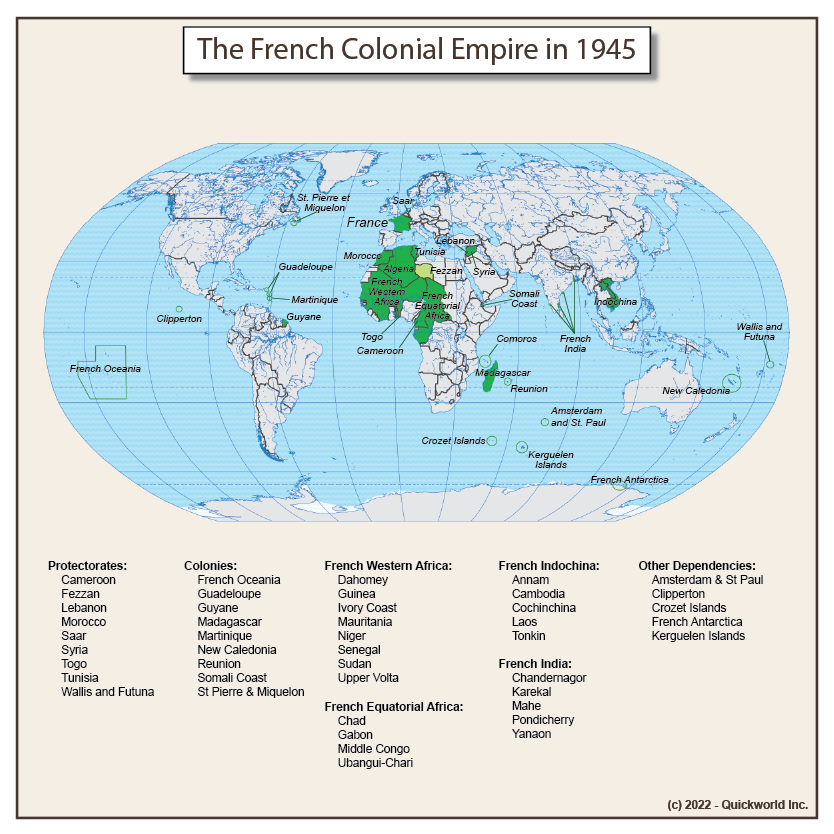While its North African, Middle Eastern, and South-East Asian possessions were the theatre of fierce battles during World War 2, France had regained full control of its pre-war empire by the end of the War. It also occupied two foreign territories, the German Saar and Lybian Fezzan, that were reunited with their respective countries of origin in the 1950s. As this map shows, the French colonial Empire is a global patchwork of colonies, protectorates, and international mandates, most of which are only years from acquiring their independence. Two major wars, in Indochina from 1945 to 1954, then in Algeria from 1954 to 1962, proved that France's time as a colonial power was coming to an end. Syria and Lebanon were the first to be granted independence, followed by Indochina, the Indian possessions, Morocco and Tunisia, The Western and Central African nations, Togo, Cameroon, Madagascar, Algeria, the Comoros, and finally the Somali Coast. A number of territories remain French to this day, having been fully integrated into the French Republic (Reunion, Mayotte, Guadeloupe, Martinique and Guyane), or as semi-autonomous overseas territories (French Polynesia, Wallis and Futuna, New Caledonia, St. Martin, St. Barths, and St. Pierre et Miquelon). Uninhabited possessions are Clipperton and a group of islands and Antarctic lands known as the French Southern and Antactic Lands.
The French Colonial Empire in 1945


